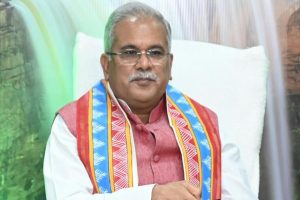The recent statement of Shri Sukanta Mazumder, the Union minister of state, DONER, i.e., development of the north eastern region that he had suggested to the PM, inclusion of North Bengal districts in the North Eastern Council, which functions under the DONER Ministry from Shillong, has predictably invited strong protests from the party in power in West Bengal and is seen as a step to eventually divide West Bengal. There is, however, a near unanimity that North Bengal districts suffer from “development lags” due to low allocation of funds in the state budget—Rs 861 crore in the current year, as pointed out by Sri Raju Bista, a Parliamentarian of North Bengal.
North Bengal is the only part of India that shares land borders with three countries—Nepal, Bangladesh, Bhutan, and in close proximity to Tibet—and three Indian states as well—Bihar, Sikkim and Assam. Even the map of West Bengal appears to be odd—a duck with a weak neck, so to speak, as only a narrow strip of land connects its main body with its northern districts, which separate Bihar from Bangladesh. Any defence analyst would thus consider the whole of North Bengal vulnerable to “land threats”—especially armoured thrusts and not just the “chicken neck” – the Siliguri corridor.
Advertisement
In military science, “land threats” are based on terrain and the capability, present and potential of the neighbouring country because “intentions” change.
One must also note that the present geostrategic importance of the north east is primarily the outcome of the “Partition of 1947, the rise of the People’s Republic of China in 1950—its takeover of Tibet soon after, and the border war with China in 1962. The unresolved border issue along the Line of Actual Control and ‘border with Bhutan, Sikkim and Arunachal Pradesh have enhanced it to a critical level. To these must be added the mind-boggling “diversity” in the population of the northeast and the potential for conflicts therein. The never-ending ethnic insurgencies in Myanmar, especially in areas along the Indo-Malaysian border, and the failure of the military junta to control the border areas have led observers to conclude that in Myanmar “the second world war never really ended.”
What is north east today was aptly defined in the colonial period as the “Eastern Frontier of Bengal” meaning Bengal Presidency, and hence the law that provides for the inner line permit system, which some groups in Meghalaya now are demanding its extension is the Bengal Eastern Frontier Regulation 1873. The large presence of ethnic Bengali populations in the northeastern states is the result of these territorial adjustments. The enormous strategic importance of this law needs appreciation. First, it had drawn an “inner line” within the Bengal Presidency to include the areas that form today’s Nagaland, Mizoram and Arunachal Pradesh for enforcement of the inner line permit regime under which no subject of British India could enter into these areas without a valid permit, not because the British wanted to preserve and protect the “culture of the hill tribes” as is wrongly perceived by some in the north east now, but because of limited state capacity to provide security and safety to British subjects due to hilly terrain and little control over the hill tribes. This was the ground for restrictions on movement as well as acquisition of property by the plains people in these “tribal areas”. It should be noted that Khasi Jayantia and Garo Hills, which form Meghalaya now, were not notified under this regulation but were “partially excluded areas” under the Government of India Act 1935, while the areas under the Inner Line permit system were put in the “excluded areas”—outside the power of the Assam Legislature to make laws under the same Act.
We may note that Manipur enjoyed an “independent status after the end of Burmese occupation in terms of the 1826 Treaty of Yandabo, under which Burma ceded Ahom kingdom and Manipur to the British. However, even though a political agent was appointed to “act as a medium of communication between the state and the British government,” the King of Manipur enjoyed substantial autonomy to administer the state.
To complete this account, we may note that three large revenue-earning districts of Bengal—Goalpara, Sylhet and Cachar—were “transferred” to Assam to make the province financially viable from the assured revenue of the “permanently settled” areas. The “State of Hill Tippera”—as the present-day Tripura was known before “Partition”—differed” from other princely states classed as tributary,” as the District Magistrate of the adjoining Bengal District of Tippera functioned as an “ex officio political agent of the government.” Today’s Tripura was thus an extended part of Bengal, just as South Lushai Hills district, which is now Mizoram, was also transferred from Bengal to Assam in 1898. Interestingly, its Chakma District Council at Demagiri, constituted under the Sixth Schedule of the constitution as Mizoram emerged first as an Union territory in 1972 and as a state in 1988, is the only area the Buddhist Chakma tribe could call their “home in India after their homeland, Chittagong Hill Tracts, was unjustly given away to Pakistan even when it was an “excluded area” under the Government of India Act 1935, and over 86 per cent of its population were Buddhist chakmas, Kuki tribes and Hindus.
Finally, the fact that West Bengal is integral to the development of the north–east is recognised in the Kaladan Multi-Nodal Transport Project’s object of linking eastern most parts of the north–east to Calcutta Port through Myanmar’s Sittwe port. Further, since Teesta drains into Brahmaputra, West Bengal is represented in the Brahmaputra Board as Secretary Irrigation, the Government of West Bengal is a special invitee, and Sikkim’s Irrigation and Flood Control Department is also in the Board constituted under a central law, the Brahmaputra Board Act 1980.
In this background, the inclusion of Sikkim as the 8th Member of the North Eastern Council in 2003 following an amendment of the NEC Act 1972 in December 2002 is a recognition of the reality that integrated development of the north east demands inclusion of Sikkim and an extended part of the region—North Bengal as well. It may be recalled that the NEC was established as a regional advisory and planning body under the NEC Act 1972 mainly to address the issue of coordinated regional development arising from the “reorganisation of Assam and the north east under the NEA Reorganisation Act 1971 into 7 units—4 states—Assam, Nagaland, Meghalaya, Manipur and the UTs of Mizoram and Arunachal Pradesh—because the resource and other constraints would not permit any of these states to implement large infrastructural projects to benefit all or other constituent units. Thus all 7 units are represented in the NEC, which is mandated to prepare a “regional plan” and finance and implement projects of a “regional nature, that is, projects that will benefit more than one constituent unit. One must note here that NEC has no regulatory role now, and hence the apprehension that inclusion of North Bengal districts would mean their separation from West Bengal is unfounded, as only the state of West Bengal could be inducted into NEC as a member like Sikkim by an amendment of the NEC Act and not any part of the state.
NEC projects have strategic importance as these are infrastructural projects in transport, power, and thermal, which, given the small size and limited resources, the states are not in a position to take up and to connect the region with the rest of the country. It has been funding implementation by states of a remarkable initiative—the NE Region Community Resource Management Program for Upland Areas for Sustainable Development.
DONER Ministry’s 2023-24 budget of Rs 5,892 Cr and the fact that there are 27 ongoing transport and 4 power development and transmission projects apart from projects in health and education under the NEC sector indicate the critical role of NEC projects in development of the North East, as, for instance, the establishment of the North Eastern Institute of Science and Technology at Itanagar and power projects under NEEPCO—North East Electric Power Corporation gave a big boost to development of the region. If north Bengal is also inducted, the NEC-funded projects—if properly coordinated with the state infrastructural, social, educational and skill development projects—would be a welcome “additive development investment” and might position Siliguri as the main plank of the Act East Policy and a Metropolis of the subregion serving East Nepal, Bhutan, Sikkim and north Bihar as well. It may open up many growth possibilities, such as the Siliguri-Bongaigaon-Guwahati Economic Corridor linked to the Asian Highway, Bangladesh and ASEAN. It’s time to be “positive” and to act as the north–east begins from north Bengal.
The author, a retired IAS officer of Assam Meghalaya cadre had served in the North Eastern Council as Planning and Financial Adviser, and was a member Academic Council, National Defence College
















